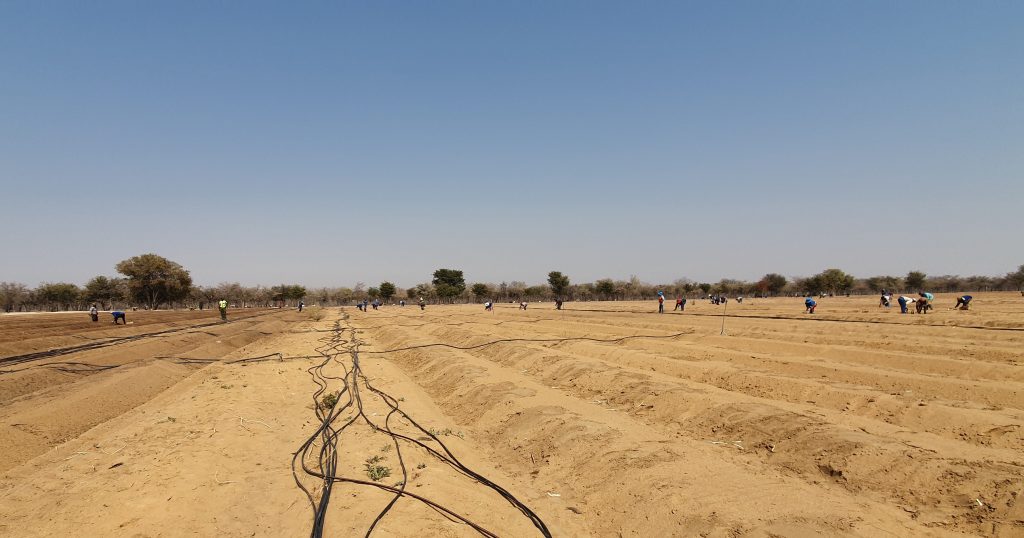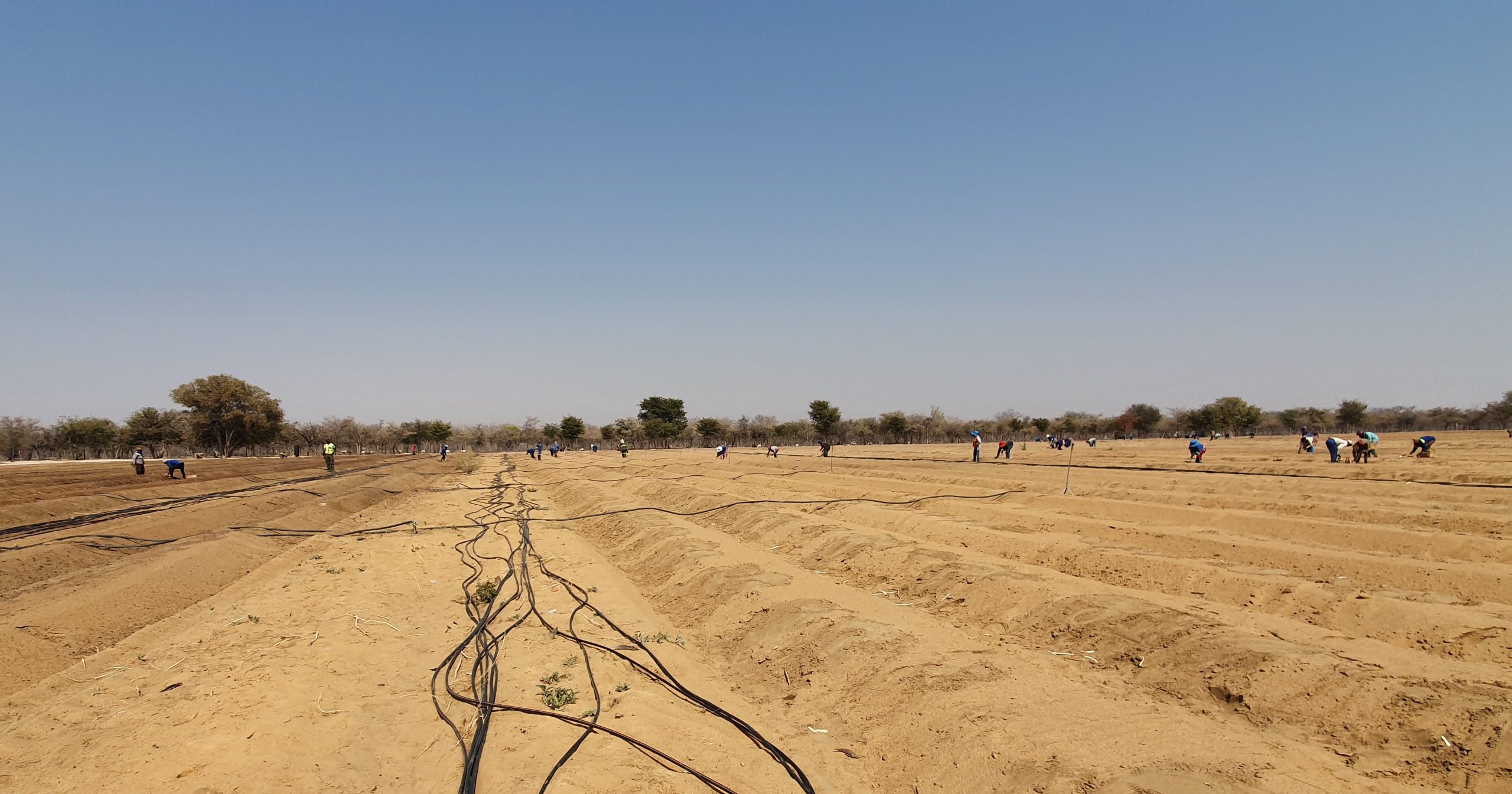Asparagus to conquer Africa
Asparagus for processing, canning and freezing is subject to different production constraints from asparagus for the fresh market. Two parameters are decisive for this type of culture. The availability of deep, sandy land with good water resources is a primary agronomic parameter. The availability of labour at the lowest possible cost is a second determining economic criterion. The history of asparagus production is marked by the industry’s migrations driven by changing labour costs and availability, while at the same time maintaining the same distribution markets in North America and Europe. Canned or frozen asparagus left France in the mid-1980s, when Spain entered the Common Market and was able to offer lower labour costs and receive subsidies.
Motivated by low labour costs
In 1995, the Spanish asparagus industrialists set up in Peru attracted by the availability, cost and efficiency of Peruvian workers. This explains why there is no longer an asparagus canning industry in Europe with the exception of the PGI Asparagus of Navarra. Faced with the rising costs and scarcity of Peruvian labour in around 2005, some of the companies decided to set up in China. But China’s economic and industrial boom over the past decade has seen a steady flow of workers leaving the countryside to be absorbed by the construction and industrial sectors. Now, new asparagus manufacturers or the same companies that were in Spain, Peru and China are setting up in Africa. These players have mainly chosen Namibia, Ethiopia and Madagascar for various reasons. Each of these African countries already has between 100 and 400 hectares in place in less than 5 years with a projected 400 to 600 hectares more in the future. The primary driving force for these new implantations is the low labour costs available. Thus, the average daily cost including expenses is estimated at US$3 per worker in Madagascar and Ethiopia and $5 in Namibia, compared with $10 in China, $20 in Peru and $60 in Spain. The availability of a large number of workers is also critical to the decision.
Need for mulch in asparagus production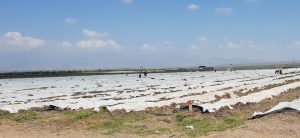
Another asset the African continent has is access to good, deep, virgin land at reasonable prices. Prices are about $5,000 to $10,000/ha. However, these are fallow lands that require a lot of work to grow crops. While Peru enjoys very stable temperatures throughout the year (between 12 and 30 degrees) these African countries, in contrast, have much greater climatic ranges, going from 5 to 30 degrees Celsius in Madagascar, up to 35 degrees Celsius in Namibia, and up to 40 degrees Celsius in Ethiopia. The winter period does not allow production, and summer temperatures are too high (especially in Ethiopia and Namibia), slowing or stopping production. It is therefore obligatory to use mulch for warming and to ensure the production of asparagus in the spring and autumn. Even if asparagus crops are at altitude (between 1,000 and 2,000 m) in order to escape the excessively high summer temperatures, the soil must be refreshed with irrigation water. Water is available in sufficient quantity and quality from dams or deep boreholes. On the other hand, the rains are irregular and difficult for the local meteorological services to predict. For Madagascar and Namibia, located in the Southern Hemisphere, the period of precipitation is between November and March. For Ethiopia, in the Northern Hemisphere, it rains the most between June and September. These rains can interrupt water stress and complicate harvesting and health protection. Without special measures, these new zones can only produce 3 to 5 months a year, which impacts heavily on the returns on the very high investment costs for asparagus fields.
Essential technical adaptations
With the benefits, however, come certain constraints and difficulties. Indeed, while the workforce is often plentiful, skill and motivation levels may be low or entirely absent. For many workers, asparagus is a totally unknown crop, which requires time for training and learning. Careful management is crucial if the expected economic gains are to be achieved. Even if local, this workforce is often very scattered, with no means of transport. The company must therefore implement transport logistics to move its workers and sometimes even house them, which in turn requires constructing housing. Untouched asparagus-friendly land may also be land which has been poorly cultivated previously. The parcels sometimes require levelling work as well as the construction of basic infrastructure (roads, wells, etc.) to make production possible. These “new Eldorados” also require technical adaptations and new expertise in cultivation to adapt to climatic conditions that are different from areas already cultivated in the world. In
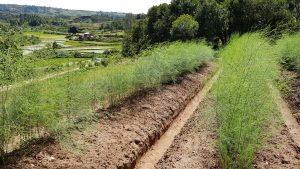
some cases, climate data is deficient or non-existent. These new destinations for asparagus have no nearby bases for the supply of inputs. It is therefore necessary to import all means of production, storage and packaging, which involves time delays that sometimes require order growing equipment 7 to 10 months in advance. The resulting costs can very quickly reduce or even wipe out the expected economic gains. In addition to the very high cost of air cargo, between $1.5 and $2/kg, it is also important to take into account the remoteness of international airports, the average regularity of domestic flights, the few tarmac roads, and the numerous tracks; remoteness of ports for sea freight (1 to 2 day’s transport). Also, it is almost impossible to export fresh asparagus. In order to get the best value from the product, it must be transformed either by appertisation (canning) or, more riskily, by freezing. Both cases require very costly agro-industrial equipment.
Danper
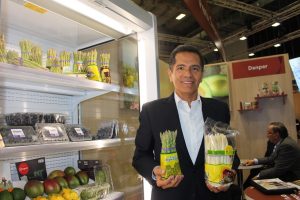
Three markets for Peruvian asparagus
Peru-based Danper has been processing white asparagus for canning since 1994. In its early days, the company sourced from the producers of its own region. It was not until 2002, after acquiring some land, that it began producing and marketing white asparagus for fresh export markets. “Fresh white asparagus has to be of a high quality level and there must be total control of the production chain until shipping,” said Danper’s director Jorge Aranguri. Then, in 2004, the company invested in its own freezing unit, mainly to freeze green asparagus. Today Danper has over 1,100 hectares of its own asparagus, with an additional 1,000 hectares belonging to various partner producers. The average yield of asparagus is around 10 tons/ha. Asparagus production takes place all year round, which means three markets can be supplied: fresh, canned, and frozen, according to the different qualities of asparagus and market prices. “Our peak production of white asparagus for the fresh market runs from August to December,” said Aranguri. For this market, calibres above 14 mm are preferred. For canning, calibres of 9 to 12 mm after peeling are desirable. “We have different opportunities due to the different quality requirements. This allows us to make the best use of all types of asparagus and to adjust to the markets,” said Aranguri.






